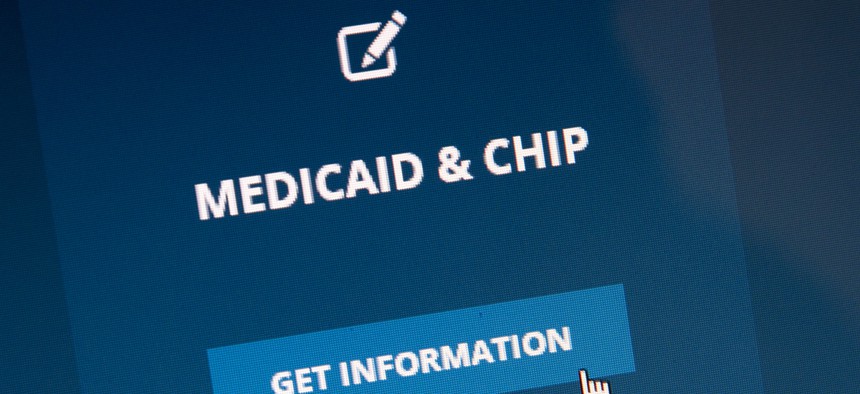Surging Economy Contributes to Decrease in Medicaid Enrollment

Medicaid spending grew while enrollment decreased, partially due to the rising costs of prescription drugs, the report found. Shutterstock

Connecting state and local government leaders
A report from the Kaiser Family Foundation outlined a .6 percent drop in Medicaid enrollment in 2018, the first since 2007.
Medicaid enrollment dropped this year for the first time since 2007, the result of a surging economy and improvements to eligibility systems at the state level, according to recent data from the Kaiser Family Foundation.
The .6 percent decrease came even as Medicaid spending rose by 4.2 percent, the same rate as last year. The discrepancy is largely due to the rising costs of medication and long-term health care, as well as mental health services, according to the report, released this month by the nonprofit health-care organization.
“A stronger economy was a primary factor driving lower Medicaid enrollment growth and relatively steady spending growth” as states wound down the current fiscal year, the report says. “While slower caseload growth helped to mitigate spending growth in [fiscal years] 2018 and 2019, higher costs for prescription drugs, long-term services and supports and behavioral health services, and policy decisions to implement targeted provider rate increases were cited as factors putting upward pressures on total Medicaid spending.”
Roughly 73 million people were enrolled in Medicaid as of August, according to the most recent federal data. Enrollment typically declines in the federal-state health-care insurance market during economic booms, when unemployment levels fall and more Americans are able to secure private insurance through their jobs or to purchase it on their own.
Low unemployment levels are a factor in the current enrollment downturn, the report says, but new eligibility requirements and system upgrades in some states have also eliminated backlogs and contributed to trimming the lists of Medicaid recipients. A total of 27 states reported enrollment declines for fiscal year 2018, and 10 reported declines for fiscal year 2019.
“A number of states that had previously implemented new or upgraded eligibility systems noted that they had eliminated redetermination delays and backlogs, which also contributed to slower, flat, or declining enrollment growth,” the report says. “In addition, some states noted that upgraded systems enabled enhanced verifications of enrollment data that resulted in further downward enrollment pressure.”
States expect spending to increase to 5.3 percent in the next fiscal year as enrollment grows by about 1 percent, according to a survey of state Medicaid directors.
The upcoming midterm elections at both the state and federal levels are likely to have impacts on Medicaid, the report concludes. Federal elections “could determine whether Congress takes up legislation to make further changes to the Affordable Care Act or to reform and cap Medicaid financing,” while state contests will have impacts for states currently considering Medicaid expansion.
Thirty-six states have gubernatorial elections this year, the report notes, while three—Idaho, Nebraska and Utah—are considering ballot initiatives to adopt Medicaid expansion. Montana voters will also consider a tobacco tax to pay for continuation of that state's Medicaid expansion, which is set to expire next summer.
“Fiscal year 2019 will be a year to watch how Medicaid’s role evolves on the ground in the 50 states and D.C.,” the report concludes.
Kate Elizabeth Queram is a Staff Correspondent for Government Executive’s Route Fifty and is based in Washington, D.C.

NEXT STORY: What can federal agencies do for smart cities?




